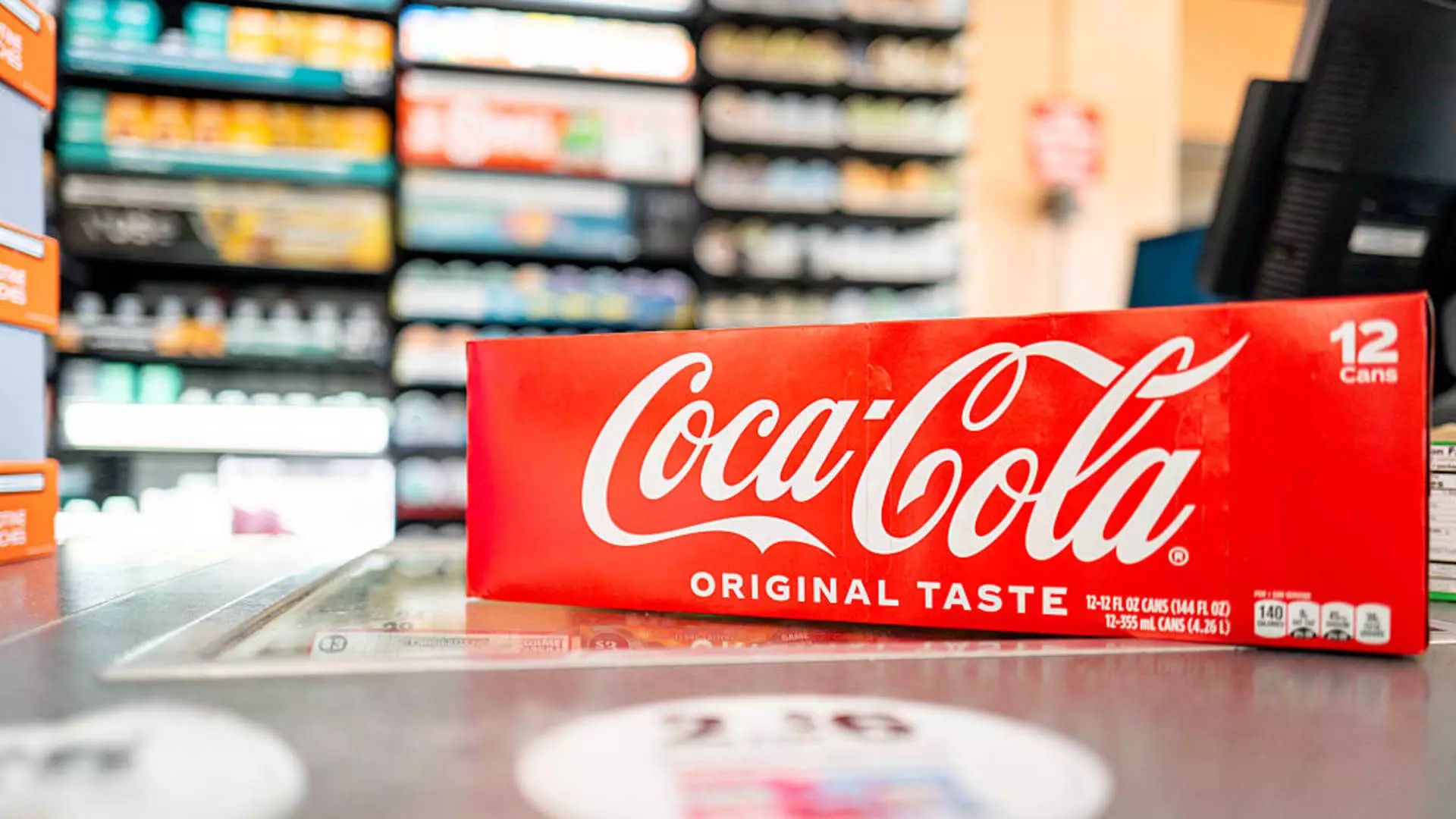Coca-Cola’s recent financial report presents an optimistic façade, boasting earnings surpassing analyst expectations and a modest revenue increase. However, a critical examination reveals that this glossy image conceals underlying vulnerabilities. The company’s supposed resilience is heavily dependent on a handful of markets, predominantly Europe, where demand remains robust. Yet, in nearly every other region—North America, Latin America, Asia-Pacific—volumes are declining or stagnating, a clear sign that the global health of the company’s core business is fragile at best. The narrative of growth, therefore, is built on selective data and a narrow perspective, ignoring the broader decline in consumption that is shaping consumer habits worldwide.
The emphasis on organic revenue growth and beating earnings projections may bolster investor confidence temporarily, but these metrics are often manipulated or calculated to obscure more troubling trends. When revenues are driven predominantly by pricing strategies rather than actual volume growth, it suggests a market saturation or waning consumer appeal rather than strength in product desirability. While Coke reports a 5% increase in organic revenue, it does not fully grapple with the reality that global unit case volume fell by 1%, signaling a transforming landscape where demand is weakening even in traditionally profitable sectors.
Economic Uncertainty and Consumer Fatigue: A Brewing Crisis
Despite corporate optimism, the broader macroeconomic environment paints a different picture—one marked by economic uncertainty, inflation, and geopolitical tensions that are eroding consumer confidence. Coke’s acknowledgment that these factors have impacted sales is revealing. Yet, instead of addressing these root causes, the company seems to casually dismiss them or treat them as temporary hurdles. The reality is that consumers are tightening budgets, particularly in lower-income brackets, whose spending is increasingly targeted by Coke’s marketing efforts for affordability. This shift indicates deeper systemic changes in consumer behavior, which are unlikely to reverse easily.
The company’s reliance on the U.S. and European markets—areas where demand appears to be stabilizing under strategic interventions—should not be mistaken for universal strength. The decline in Latin America and Asia-Pacific volumes, and the flat growth in water and health-conscious beverages, underscore a broader trend: consumers are becoming more health-conscious, more selective, and less inclined to indulge in traditional soft drinks. Coke’s failure to adapt fully to this paradigm shift risks long-term obsolescence.
Twin Challenges of Market Saturation and Public Perception
Coca-Cola also faces a dual challenge—market saturation and the impact of social and political perceptions. The company’s recent troubles, including unfounded social media rumors about reporting undocumented workers, have temporarily dented sales, particularly in Hispanic communities. Although Coke claims to have moved past this controversy, it highlights the fragile relationship between corporate reputation and consumer loyalty in a hyper-connected world.
Furthermore, the company’s product portfolio reveals internal contradictions. While it boosts efforts to introduce cane sugar variants for nostalgic appeal, health-conscious segments are growing faster, and Coke’s traditional offerings—such as sodas—are stagnating or shrinking in volume. The company’s reliance on diversifying into coffee, water, and plant-based beverages is a recognition of these changing tastes, but it’s insufficient if core products continue to lose ground.
The decision to keep a focus on increasing prices rather than genuinely expanding demand appears to be a strategic band-aid rather than a sustainable growth model. Increasing prices on products with declining volumes is a recipe for declining margins in the long haul. Coke may appear resilient on paper, but beneath the surface it is quietly sputtering—driven more by fiscal engineering than true market vitality. The global soft drink leader’s future depends heavily on its ability to genuinely innovate and address fundamental shifts in consumer behavior, rather than rely on short-term financial tactics and regional exceptions.


Leave a Reply